Among the variety of modern crops there are plants, by which it is simply impossible to pass. I want to stop, admire their beauty and breathe a wonderful aroma of flowers. Such decorative plants undoubtedly be attributed to all the favorite lilac - frequent guest at the household plots and urban parks. This majestic shrub has long been firmly entered the culture and is considered an important part of any landscape design. Many are accustomed to his wild species that are often found on the wasteland, roadside roads.
To date, gardeners have a large number of hybrid lilac grades, which are characterized by larger inflorescences and bright shades. This species include lilac Chinese, which, despite its relative winter hardiness, is very popular.
In this article, consider the features and description of the Lilac Chinese, we note the characteristics of the main varieties and forms of this culture, as well as use options in the landscape. We give important rules and nuances of planting and care for lilac Chinese.
Features and morphological description of Chinese lilac
Lilac is a decorative shrub, which belongs to the Maslin family and has different sources from 13 to 30 different species, characteristics of the appearance, flowering timing and a tint of inflorescence. In the wild, most often you can meet a lilac ordinary, which prefers to grow on the Balkan Peninsula, in the southern Carpathians, along the bottom of the Danube. Chinese lilac in nature does not occur, it is more cultural variety that was obtained by crossing the lilac of the ordinary and lilac Persian. Thanks to this union, this hybrid type of lilac received a large number of positive and qualitative characteristics.
The general name of Lilac Syringa has a Latin value that occurred from the Greek word "syrinx", in translation denoting "tube". This definition is associated with the structure of the flower of lilac. According to another version, this decorative shrub got its name from an ancient Greek musical instrument on the similarity of the flute. This tool was made by the God of Forests by a landmark of the cane, in which Sirring's Nymph was turned. The name of the type "Chinese lilac" has incomprehensible origin, as it found this hybrid on the territory of France and in its external signs it looks more like a lilac Persian. Chinese lilac arose in the form of a natural hybrid in 1777 in the Ruan Botanical Garden and is only a garden culture.
The hybrid origin of the Chinese lilac was proven by famous breeders of L. Henry and E. Leman, who checked it by artificially crossing various types. This variety of lilac has high decorative, yielding only the lilac ordinary, has a beautiful shape of a bush and magnificent inflorescences. This allowed the Chinese lilac to become very popular among the gardeners of European and Asian countries.
Description of Chinese Lilac:
- Chinese lilac is a leaf fall, decorative, hybrid shrub, belonging to the general family of Lilac and a large family of oil. Very decorative shrub, which is an excellent addition to any landscape design.
- This plant has a strong branched and powerful root system, which allows the shrubs to be firmly cling to the soil. This feature of Chinese lilac is actively used by gardeners, which are strengthened by the plant sand slopes and loose soil.
- Chinese lilac is a multi-rolled plant that can consist of a large amount of thin and thick trunks. Sometimes the trunk can reach in diameter 20 cm. However, in comparison with the lilac of an ordinary, this species has more subtle shoots.
- Annual shoots have a brown-gray or olive green bark. Adult shoots are painted in dark gray shades. At the same time, the bark has a feature to be trapped by narrow stripes.
- The Chinese lilac has a fairly compact and beautiful crown, which in diameter can reach about 3-4 m. A shrub can grow up to 4-5 meters.
- This openwork and picturesque shrub with drooping shoots is fully covered with beautiful leafy, which are located on the shoots opposite.
- The leaves of the Chinese lilac of a small size, in length reach 4-7 cm, and in a width of 2-4 cm. On the shape of the leaves of ovate-lanceal, they are sharp to the top, they are attached on thin cuttings. The sheet surface is dense, slightly leathery, has a light green color.
- Flowers are small, tubular shape, in diameter can reach the maximum as possible. Consists of a flower of a thin whisk and oval flat lobes.
- All the flowers are collected in wide-brown panicles, which can in length can reach 10 cm, in some cases, inflorescences can grow up to 16-20 cm.
- Chinese lilac can have different inflorescences in color: from pink to dark purple. There are also varieties with snow-white flowers.
- Flowers can be simple and terry, possess a pleasant aroma.
- Chinese lilac, as well as ordinary, is distinguished by abundant and lush flowering, which falls on May and lasts about 12-15 days.
- This kind of lilac is most often not fruit. When growing on the territory of the Moscow region, the ends of the shoots can be moderated. Beautiful Chinese lilac can grow on the territory of Ukraine, Belarus, Baltic States, Transcaucasia, Central Asia.
- Chinese lilac has sufficient winter hardiness, well tolerates drought, but it has a demandingness to the fertility of the soil.
Using Chinese Lilac in Landscape Design
Lilac is a very beautiful decorative shrub that enjoys just very popular with gardeners and landscape designers. Chinese lilac has a high decorative value, so beautiful and compact bushes of this species can often be found on the household plots. Consider the main accommodation options for this shrub:
- First of all, the bushes of the Chinese lilac look spectacularly in single landings, as they have the right and slightly empty crown of the ovoid or pyramid. If you put a bushing of Chinese lilac on the background of lawn, then a very successful garden composition will be.
- This variety of decorative plants can be used as a living hedge. Due to the large number of trunks, the Chinese lilac bushes will be able to create dense fences.
- Many landscape designers are created with the participation of lilac bushes of this species, various compositions where a variety of deciduous decorative plants participate.
Characteristics of popular varieties and forms of Chinese lilac
To date, there are several opinions as to how much a variety of lilacs. According to one literary sources of them, only 13, and according to others, their number is approaching 30. Chinese lilac, like other varieties of this decorative shrub, has several sufficiently popular and common varieties and forms that are actively used in gardening. Consider the main characteristics of these varieties.
- Saugeana Chinese Lilac grade. This is a very spectacular form of this species of a decorative plant, which has a bright appearance. It is an openwork and picturesque deciduous shrub with a slightly dilated shoots and lush flowering. Crown in such a plant stretched. In the height, the Chinese lilac of this variety can reach the maximum of 3 meters, while in the diameter of the crown is 2.5-3 meters. The plant has very beautiful colors that have a rich dark purple shade, and also have a pleasant aroma. Flowers are collected in large and broad inflorescences. Flowering falls at the end of May - the beginning of June. The variety is relatively frostable, in the climate of the Urals climate requires shelter for the winter.
- Chinese lilac form duplex. Also very beautiful variety of lilac, which is popular with gardeners. It is distinguished by compact sizes of bustle, height can reach 2-3 meters. Special value variety - terry purple flowers collected in lush inflorescences. Blossom starts approximately at the end of May.
- Form of Chinese lilac Metensis. It is a shrub tall up to 3.5 m with an egg-shaped or pyramidal form of the crown. During flowering at the ends of the shoots, large inflorescences are dissolved in the form of blizzards, which can be in length 15-16 cm, and 9 cm wide in width. Inflorescences are formed on the shoots of a vulgar year, they are slightly debugging. Metels consist of fragrant pink-purous colors with barely catchy brilliance.
- Chinese lilac forms Alba Dieck. This is a decorative deciduous shrub, which during flowering is completely covered with beautiful snow-white flowers.
- Form of Chinese Lilac Bicolor (Lemoine) H.jaeger. This is not a very common variety of Chinese lilac, which is distinguished by beautiful two-color colors.
Reproduction of Chinese Lilac: the most common ways
It's not so difficult to grow a bustard of Chinese lilac on its site, even a novice gardener will cope with the simplest actions. For this, it is enough to know the basic methods of reproduction of this culture. To get a young beautiful plant, you can take advantage of the following options: seed reproduction, vaccination method, reproduction with tanks and stalling. Each option has its own rules and distinguishing features that are important to consider to obtain the desired result.
Seed reproduction of Chinese lilac
- This method of reproduction is rarely used. Most often, breeders and scientists are resorted to it to growing new species specimens of lilac in greenhouses and greenhouses. In addition, it should be borne in mind that the Chinese lilac does not always tie the fruits, so it will not always be possible to collect seeds of this plant.
- If you are lucky and seed boxes were raised on the plant, they need to collect them after full ripening in the fall in crude weather.
- After collecting the box, it is necessary to dry at room temperature for several days, and then the seeds of Chinese lilac are removed from them.
- To ensure the best germination, it is important to stratify the planting material. For this, the seeds need to be mixed with wet clean sand in the proportion of 1 to 3 and fall asleep it into the container, which is placed in the refrigerator to the bundle for vegetables. The stratification process lasts about 2 months, during which the sand needs to be regularly moistened.
- After stratification, the seeds of Chinese lilac sowed in advance prepared containers with soil. This is usually happening at the beginning or middle of March.
- Be sure to predetermine the garden land in the oven, after which place it in the suitable box. Seeds are plugged as much as possible by 1.5 cm.
- After landing, the surface must be moistened from the spacing.
- The first shoots may appear both after 2 weeks and after a few months.
- Approximately 2 weeks after the first germs appeared, it is necessary to dive seedlings. When air and soil warm up, young plants are planted for a permanent place in open ground.
Reproduction of chinese lilac grains
- This vegetative way of reproduction of Chinese lilac is used much more often, since it is simpler and does not take much time.
- It is recommended to carry out the reproduction of the tanks when warm weather is installed.
- On the bush of lilac, you need to choose a young one, just a beginner to arevice the escape that needs to be overlooked with a copper wire in two places: at the very base and 80 cm from the first wire. In this case, the wire should not damage the bark.
- Next, under the bush, dig a small groove of the depth of only 1.5-2 cm and put into it the selected and prepared by the escape. After that, suck the hare of the soil, leaving only the top on the surface.
- On the selected wire, young shoots will begin to appear. When they reach a height of 15-17 cm, they must be filled with fertile soil about half the height.
- Throughout the season, it is important to regularly take care of the tanks: constantly moisturize the soil, remove weeds and pour the soil.
- In the fall, the landscape of the wire must be separated from the bush, after which it is divided into shoots with a piece of foundation with quite formed roots.
- Young seedlings can be planted in a greenhouse to grow or plant right away. At the same time, do not forget to hide young plants well.
The reproduction of Chinese lilac vaccination
- The reproduction of Chinese lilac by the method of vaccinations is also very popular. Although it is worth noting that such seedlings are less stable and adapted to cold and can be moderated.
- We have a trip for a given hybrid. Ordinary or Hungarian lilac.
- It is best to carry out the breeding in the springtime.
- For this, it is necessary in February or in March to take care of cuttings, which are cut from annual shoots and until the vaccination is stored in the refrigerator.
- Prepare in front of the eyelid: cut all shoots and branches, leaving 15-20 cm; Be sure to remove all the root piglets; Pour abundantly within a few days.
- For the eyepiece, take a special volatile knife and gently split a depth of a depth of approximately 2-3 cm.
- Further, the knife is cleared of a Chinese lilac cutlets from two sides in such a way that a peculiar wedge turned out to be inserted into the splitting of the bondage paste.
- The connection site is fixed by scotch.
- Experienced gardeners are recommended to the garden Warr to process all damaged places, after which itching the place of vaccinations to the package to create a greenhouse effect.
- The package is removed only when the kidney swell is started.
Penciling Chinese Lilac Reproduction
- This method is quite complicated, since the stalks of Chinese lilac are seriously rooted. Therefore, it is important to spend everything correctly and clearly to get a positive result of your works.
- First of all, the cuttings must be chopped immediately after flowering or during it. You need to choose young annual units of medium thickness with 2-3 knots.
- Cuttings should also be properly prepared. For this, the lower cut is made at an angle, and the top straight. From the bottom it is necessary to remove all the leaves, with EOM, the upper leaves are removed only half.
- Before rooting, it is recommended to place the stalks of the Chinese lilac on a day into the corneter solution.
- It is important to root the cuttings in the greenhouse. To do this, prepare a special container or a box that needs to be defamed in advance with a solution of manganese.
- The soil consisting of peat and sand should also be treated with special preparations or rolling in the oven.
- Shores the cuttings at a short distance from each other, after which the box is covered with a film or each cutlets separately covered with a plastic bottle.
- The rooting occurs in about 2 months when you can remove the shelter and air landing.
- Young plants planted at a permanent place only in spring.
Planting Chinese Lilac - a gradual description of the process
Chinese lilac is a beautiful decorative shrub, which is distinguished by a fairly quiet character and endurance, which makes it possible to land even in the middle lane of Russia and in the Urals. The main thing in this process is to carefully prepare and clearly comply with all the rules for landing seedlings of lilac into an open ground.
Stage 1. Selection and purchase of Chinese lilac landing material
- First of all, each gardener needs to think about the acquisition of high-quality and healthy planting material.
- Chinese lilac seedlings are recommended to buy only in specialized garden centers and nurseries who are professionally engaged in breeding plants. It is here that you can buy rolling and healthy young plants that will fit perfectly in a permanent place.
- It is recommended to buy seedlings aged 2 to 7 years, as they are best come to.
- If you have a choice, it is best to acquire seedlings grown from cuttings or a gag, and not by vaccinations. In the latter case, seedlings may be weaker and capricious.
- In nurseries, the seedlings of this type of lilac can be sold with an open root system and in containers.
- Before buying, be sure to carefully inspect the landing material you buy. Pay special attention to the root system. All roots must be elastic and healthy, without visible damage and rotten sites. In young plants in containers, pay attention to the condition of the soil, which should be clean and moistened.
Stage 2. Selection of place and soil preparation for landing Chinese lilac
- The most important stage in preparing for the landing of Chinese lilac is the right choice of a place that will meet all the requirements of this type of decorative plant.
- Chinese lilac prefers to grow at open solar sites, where solar light is present in sufficient quantity. If you put the lilac seedlings of this type in the shade, then bloom will be minimal or buds simply will not open.
- The selected landing site should be protected from a strong wind, but at the same time it is impossible to completely deprive the ventilation plant.
- It is important to choose a plot on a small elevation, since in lowlands the root system of the Chinese lilac can be rotated.
- Chinese lilac loves fertile, moderately moistened, well-drained soils with a large number of humus. It is also worth paying attention to the fact that it is best to pick up soil with a neutral or weakly acid reaction.
- Before boarding, it is important to carefully switch the selected area about 2 bayonet shovels, add a slightly humus and jerk carefully.
Stage 3. Planting the Chinese Lilac - Step-by-Step Description
- To grow a beautiful and magnificent bushes of Lilac Chinese and in a short time to see his bloom, it is important to choose the right date correctly. It is best to plant seedlings of this culture in the interval from mid-July to early September. If you put a Chinese lilac in spring or at the end of autumn, then such plants will be long for a long time and the first bloom can be seen in a few years.
- Before boarding, it is important to prepare landing holes that are digging at a distance of about 2-3 meters from each other. In size, landing pits should be more root system with an earthen room and make up approximately 50-60 cm deep and the same in the width.
- At the bottom of each pit, be sure to float the layer of rubble or clamzite for drainage.
- It is important to prepare the root system. For this, all weak and fetched roots are removed. So that the root system does not start, it is important to put a landing on a cloudy day or early in the morning.
- On the layer of rubble, put a little soil, after which the seedlings of the lilac Chinese are placed on it. It is important to carefully distribute the roots of the plant over the entire surface of the pit, and the root neck spent a little from it.
- Pour seedlings with fertile soil and slightly construct the surface with your hands. After landing, seedlings are abundant.
Lilac Growing Agrotechnology: Secrets and Nuances of Care
Care for Chinese lilac does not make up special difficulties, if all the rules for planting plants in open ground are observed.
- Watering. During the growing season and active flowering flowering, lilac seedlings require abundant irrigation, which is largely reduced in the summer. At this time, the plant is quite natural precipitation.
- Loosening and mulching. Approximately 3-4 times over the season It is important to loosen the soil in a rolling circle to a depth of 7-8 cm. Do it need it carefully, so as not to damage the roots of lilac. In order not to carry out such procedures, in a robust circle you can land small perennials, which will loose soil. It is also important to climb the soil peat and overwhelming leaves to protect the roots from heating.
- Feeding The first 2-3 years of fertilizers can not be made, as the lilacs of Chinese enough nutrients that were made during the landing. From the second year after landing, nitrogen fertilizers can be made per 60 grams per plant. As such fertilizers, it is possible to apply a dung alive - about 2 buckets on one bush. From nitrogen fertilizers, the color of foliage is improved, the growth of shoots is activated. About once every two years, Chinese lilac bushes can be picked up with potash-phosphoric fertilizers. To do this, you can use the double superphosphate and potash associate in the calculation of 35 grams per plant.
- Trimming. So that the chickens of the Chinese lilac looked beautiful and well-groomed, they must be cut regularly. This procedure starts to spend from 3 years after landing. Crop best in spring until the swelling swelling. On the bush of Lilac Chinese, it is necessary to crop all the weak and damaged shoots. During the rejuvenating and formative trimming, it is necessary to choose 5-10 straight and strong branches on a bush, and the rest are trimmed. It is useful to carry out the cutting of shoots with flowers that are trimmed by 2/3
- Shelter for the winter. Young seedlings of Chinese lilac are mandatory need to be covered with the onset of cold weather. For this, the rolling circle is tightly covered with foliage and peat layer to 10 cm. When growing this plant in the middle strip and in the Urals, more adult bushes can be covered, as sometimes you can freeze shoots.
Chinese lilac - Photo
Chinese lilac is one of the most decorative varieties of a kind, which is very popular among gardeners. Its landing and care for seedlings is not completely complex and require the fulfillment of the simplest stages and rules, but the result is not to make yourself wait. In its site, in the end you will get a beautiful and lush flowering plant.

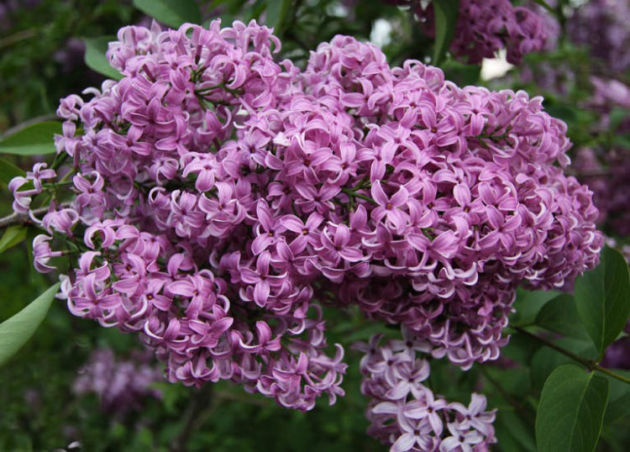

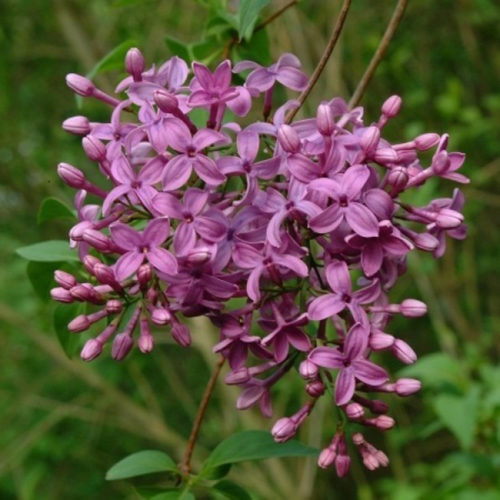
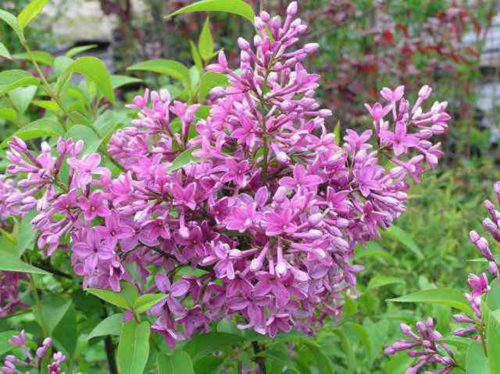




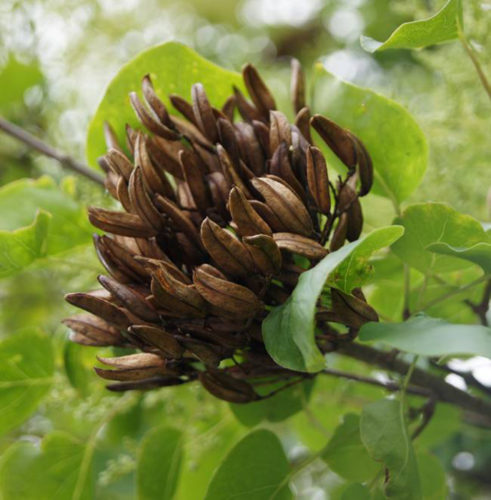
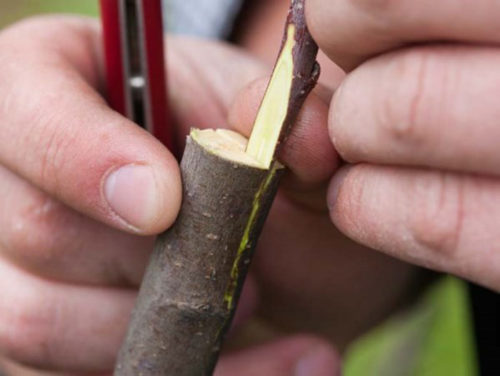
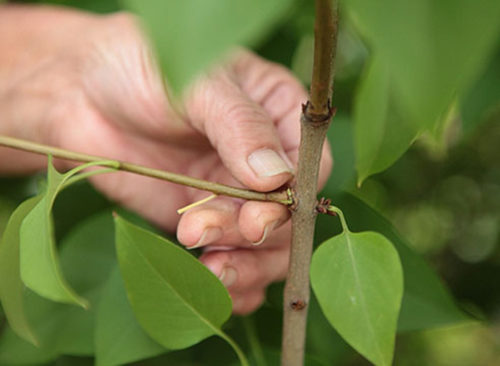
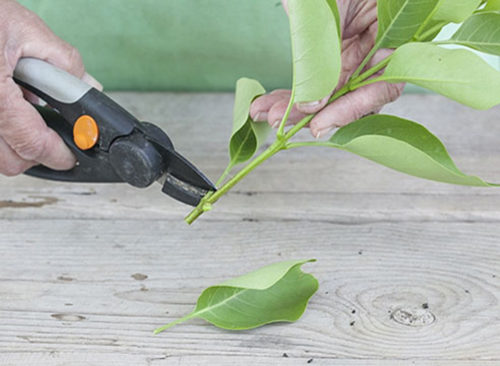


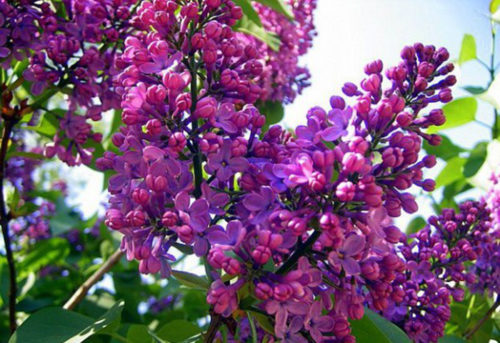
















 Start a discussion ...
Start a discussion ...